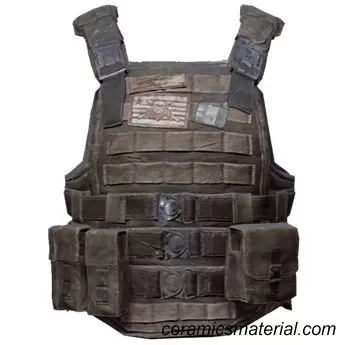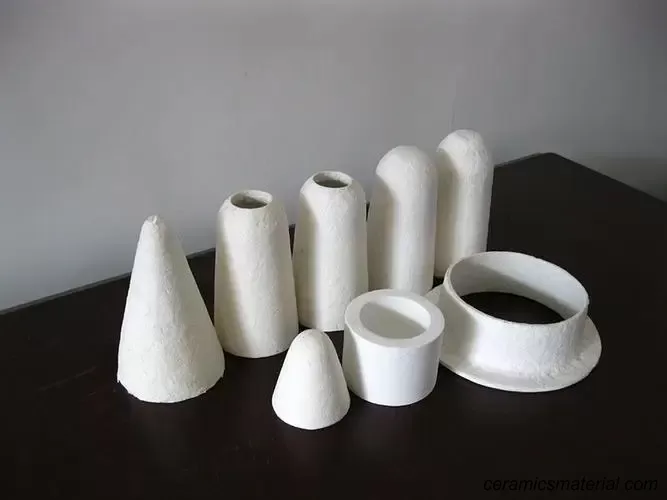Diversified applications of precision ceramic materials: from bulletproof, thermal insulation and flame retardant to high-performance clothing manufacturing
As a high-performance material, precision ceramics are widely used in industry, military, medical and other fields. With the continuous development of science and technology and people's increasing demands for safety and comfort, the application of precision ceramics in the special clothing manufacturing industry has also gained attention and development.
For example, precision ceramic materials such as ceramic fibers, alumina ceramics, and silicon carbide ceramics are used to manufacture high-performance clothing such as body armor, anti-cut gloves, high-temperature flame-retardant clothing, and radiation-proof clothing to meet the needs of industry, military, police, etc. The demand for security protection in the field. At the same time, some precision ceramic materials can also be used to make functional clothing such as UV protection and anti-pollution to meet people's needs for health and the environment.

However, compared with other fields, the scope of application of precision ceramics in the clothing manufacturing industry is still relatively small. This article will discuss the development history and application status of precision ceramics in the clothing manufacturing industry, as well as future development trends.
1. The application of precision ceramics in the clothing manufacturing industry mainly includes the following aspects:
Fiber Reinforced Composites (FRC)

Ceramic fibers and particles can be added to FRC to increase the material's strength, hardness and wear resistance. These composite materials can be used to make high-performance clothing such as body armor, stab-proof vests, cut-resistant gloves, etc. Ceramic fibers and particles have high hardness and strength and can effectively prevent puncture and cutting by sharp objects such as bullets and swords, thereby providing better protection for the wearer.
High temperature insulation material
Precision ceramics can also be used to create thermal barrier layers in fiber-reinforced composite materials to protect the performance of clothing materials in high-temperature environments. This application is common in aerospace and high-temperature industrial environments. Thermal barrier layer can effectively slow down the damage of high temperature to clothing materials, thereby extending the service life of clothing.
High temperature flame retardant materials
Ceramic fibers can also be used to make high-temperature flame-retardant clothing, which can protect the wearer's safety in high-temperature environments. This application is common in high-temperature workplaces such as metallurgy and glass industries. High-temperature flame-retardant clothing can effectively prevent flames and high temperatures from harming the wearer.
In general, the application of ceramics in the clothing manufacturing industry mainly uses some of its excellent characteristics in the field of material science to provide better protection and performance for clothing. These applications involve the design, preparation and processing of materials and require professional materials science and engineering technical support.
2. The development history of ceramic fiber in the clothing manufacturing industry
In the 1960s, the U.S. military first used ceramic fibers in the manufacture of body armor. At that time, the US Army Research Laboratory developed a high-temperature ceramic fiber material called "Fiberfrax" that could withstand high temperatures and strong impacts. This discovery laid the foundation for the application of ceramic fibers in the clothing manufacturing industry.
In the 1970s, with the continuous development of ceramic fiber technology, some companies began to use it to manufacture body armor and high-temperature flame-retardant clothing. For example, the first body armor in the United States was developed in the early 1970s. Its main material was fiber-reinforced composite materials made of polyimide fibers and ceramic particles.
In the 1980s, ceramic fiber further expanded its application in the clothing manufacturing industry. The industrial and metallurgical industries have begun to use ceramic fibers to make high-temperature flame-retardant clothing to protect workers in high-temperature environments. At the same time, high-performance cutting gloves are also beginning to use ceramic fiber materials to prevent workers from being injured during cutting operations.
Since the 21st century, with the improvement of ceramic fiber technology, its application scope and effect in the clothing manufacturing industry have also expanded and improved. For example, some companies are beginning to use ceramic fibers to create new ballistic materials to withstand higher-velocity penetrations. At the same time, some companies have also begun to use ceramic fibers to manufacture products such as cut-resistant gloves and high-temperature flame-retardant clothing to improve the safety protection and comfort of the wearer.
Generally speaking, the application of ceramic fiber in the clothing manufacturing industry has experienced a process of continuous development and improvement, and its application scope and effects are also expanding and improving due to technological improvements and changes in demand.
3. What are the limitations of the application of precision ceramics in the clothing manufacturing industry?
High cost: The production cost of precision ceramic materials is relatively high, resulting in high application costs in the clothing manufacturing industry. Therefore, its application scope is subject to certain limitations, and some small and medium-sized enterprises and consumers cannot afford its high price.
Heavier weight: The higher density of some precision ceramic materials results in garments made from them being heavier than traditional fiber materials. This may affect the wearer's comfort and flexibility, limiting its application in certain areas.
Limited clothing performance: The clothing performance of this material is prone to certain limitations. For example, its softness and breathability may not be as good as traditional fiber materials. This will affect its application in clothing fields such as sportswear and daily clothing.
Complex production process: The production process of precision ceramic materials is relatively complex and requires special production equipment and technology. This will limit its large-scale production and application in the traditional clothing manufacturing industry.
To sum up, the application of precision ceramics in the clothing manufacturing industry has some limitations, which further leads to the relatively small number of people's livelihood applications of precision ceramics in the clothing industry today. In order to better utilize their advantages and application prospects, further research and development of precision ceramic materials are needed to improve their production efficiency and reduce costs. At the same time, innovation and optimization in clothing design and manufacturing are also needed to improve the comfort and comfort of clothing. performance.
Share the Diversified applications of precision ceramic materials: from bulletproof, thermal insulation and flame retardant to high-performance clothing manufacturing
Recent News
- Introduction to the manufacturing process and application ma...
- Introduction and application of 95 alumina precision ceramic...
- Introduction to the characteristics, processes, and applicat...
- Introduction and application of alumina precision ceramics...
- Comparing precision ceramic cleavers, diamond knives, and me...
- Advantages of precision ceramic dispensing valves compared t...
- What are the advantages of precision ceramic valves compared...
- What precision components can be made from precision ceramic...

